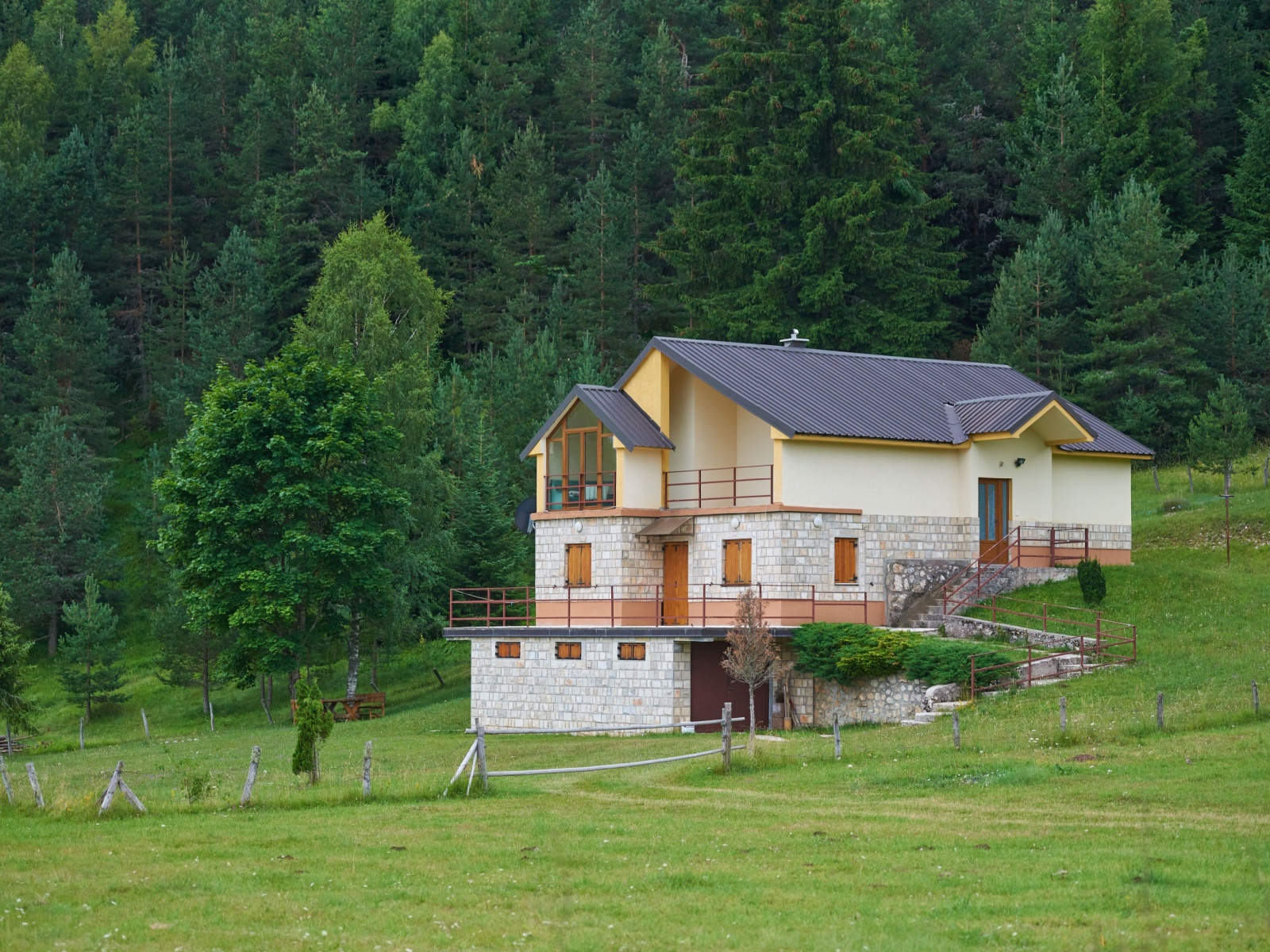The fascination with disaster movies has shown us all manner of apocalyptic scenarios, from iconic landmarks destroyed to cities overrun by natural disasters. Yet, for some, the concept of being prepared for such eventualities isn’t fiction—it’s a lifestyle. These individuals, known as preppers, are those among us who choose readiness over regret, preparing for various disasters from floods to fires and beyond.
Prepping has evolved from a niche hobby to a widespread practice. The stereotype of bunker-dwelling doomsday preppers has given way to a community focused on resilience and preparedness. One of the critical aspects of prepping is selecting a bug-out location–a safe haven during times of crisis.
Is It a Safe Distance?

Your bug-out spot shouldn’t be just any remote location. The key is accessibility—you should be able to reach it with a single tank of gas or, if necessary, on foot within a week. While it’s tempting to seek shelter far from civilization, the practicality of reaching your haven safely takes precedence. Aim for a balance: a site secluded yet within 50-70 miles of your current residence, avoiding densely populated areas while still being feasible as a refuge.
Is There Water?

Water is non-negotiable. It’s essential for drinking, hygiene, gardening, and livestock. Prioritize properties with natural water sources, like streams or lakes. If such a site isn’t available, consider if the area supports alternative solutions, such as rainwater collection systems, to ensure a sustainable water supply for your needs.
Secure and Hidden

Obscurity is your ally. A bug-out location that’s easily noticeable or accessible defeats its purpose. Opt for land that offers seclusion and security, one that’s challenging to find and enter or anyone who might intrude. Properties that seem too isolated or difficult to access for the average person could be exactly what you need for a secure bug-out spot.
Can You Function There?

Your bug out location needs to support basic survival and long-term living. Assess the soil quality for gardening since poor soil could mean food shortages. A wooded area is beneficial for firewood, crucial for heating and cooking. Consider land with space for pasture if you plan to raise livestock. Natural food sources like wild game and fish are a bonus, turning a good location into an ideal one. These factors are vital for sustained survival and should be top considerations in your search.
Zoning

Understanding zoning laws is crucial when selecting your bug out spot. You need land zoned for agriculture if you plan to keep chickens or grow a garden. To avoid legal headaches and restrictions that could impede your survival plans, ensure the property’s zoning matches your needs. This step can save you from unnecessary complications and ensure your bug out location serves its intended purpose without issues.
Is It Affordable?

Affordability is key in choosing a bug out location. While some areas offer land at little to no cost, realistically, most properties will have a price tag. Focus on finding land that fits within your budget to avoid financial strain. Taking on a second mortgage or stretching your finances too thin can detract from other essential survival preparations. It’s better to find a budget-friendly option and get creative with making it work than overextending financially for an ideal spot.
Know Your Natural Disasters

Every region has its natural disaster risks, from earthquakes in the west, tornadoes in the central U.S., to hurricanes in the east. Familiarize yourself with the potential disasters in your chosen area and plan accordingly. Earthquake-prone areas require sturdy construction, tornado risks necessitate a shelter, and flood zones mean building on higher ground. Understanding these risks and preparing for them is essential when selecting a safe bug out location.
Is There Shelter?

An existing shelter on your bug out land can save time and effort in preparation. Whether it’s a small cabin, a shed that can be converted, or even an RV, having immediate shelter is a significant advantage. If the property lacks a structure, weigh your options for quick and efficient shelter solutions that meet your needs without breaking the bank. The presence or possibility of shelter can greatly influence the functionality and desirability of your bug out location.
Knowledge is Power

Understanding your bug-out location goes beyond just owning a piece of land; it’s about knowing the terrain, the climate, and the potential hazards. If you’re not familiar with the area, your survival could be compromised. Choose a location in a region you can explore and learn about regularly. Familiarity with the local environment could be the difference between thriving and merely surviving.
Climate Matters

The climate of your chosen location can significantly impact your survival. If you’re considering a place known for harsh winters, ensure you’re prepared and capable of enduring the cold. Similarly, areas with scarce rainfall demand innovative solutions for maintaining water supply for crops and livestock. Choose a location where the climate is manageable, and you’re confident in your ability to adapt.
Seclusion is Key

Privacy and seclusion are important factors when selecting a bug-out location. Your ideal spot should be hidden from the main roads and undetectable to the casual passerby. Consider the visibility of your activities, such as the sound of livestock or the smoke from your chimney. The more secluded your location, the less likely you are to attract unwanted attention in times of crisis.
Room for Storage

Adequate storage is a critical component of a bug-out location. You need space to store supplies, from food and water to tools and clothing, ensuring you have the essentials for survival before you can establish self-sufficiency through gardening and livestock. Consider the feasibility of adding structures like root cellars or sheds to enhance your storage capabilities.
Room for Loved Ones

The size and setup of your bug-out location must reflect the needs of those who will share it with you. Whether you’re planning for a solo escape or accommodating a family, the space must be sufficient for living comfortably. Assess the size of the land and the living arrangements to ensure it can support your group.
Make It Your Own

The concept of squatting on unclaimed land might seem like a solution for some, but owning your bug-out location outright offers significant advantages. Ownership allows you to prepare and personalize the space in advance, ensuring it meets all your needs. And, as a legal owner, you have the right to defend your property, providing a strategic edge in maintaining your safety and security.
20 Crucial Supplies for Surviving a Societal Collapse

In the face of uncertainty, being well-prepared gives you at least some degree of control and security. The thought of a societal collapse, while extreme, prompts us to consider how we might endure without the conveniences of our current lifestyle. Here’s a list of 20 essential items that could prove indispensable in such a scenario. This guide isn’t about succumbing to fear but embracing preparedness and resilience.
14 Essential Canned Goods for Your Emergency Pantry

I firmly believe in keeping a well-stocked emergency pantry. While fresh food is ideal, in a survival situation, we may not be that lucky. So, for my family, even though we grow a lot of our own food, canned goods play a crucial role in emergency preparedness. They offer a reliable source of nutrition when access to fresh produce may be limited. The goods you stockpile should be affordable, easy to store, and full of nutrition.
Best Regions in the U.S. to Escape to When Society Collapses

Choosing a refuge in the event of societal collapse involves weighing the pros and cons of each location against your personal preparedness goals and abilities. Whether you’re drawn to the solitude of the desert or the protective heights of the mountains, the key is finding a place that offers safety and the opportunity for growth and renewal.
Katy Willis is a writer, lifelong homesteader, and master herbalist, master gardener, and canine nutritionist. Katy is a preparedness expert and modern homesteader practicing everyday preparedness, sustainability, and a holistic lifestyle.
She knows how important it is to be prepared for whatever life throws at you, because you just never know what's coming. And preparedness helps you give your family the best chance to thrive in any situation.
Katy is passionate about living naturally, growing food, keeping livestock, foraging, and making and using herbal remedies. Katy is an experienced herbalist and a member of the CMA (Complementary Medical Association).
Her preparedness skills go beyond just being "ready", she's ready to survive the initial disaster, and thrive afterward, too. She grows 100% organic food on roughly 15 acres and raises goats, chickens, and ducks. She also lovingly tends her orchard, where she grows many different fruit trees. And, because she likes to know exactly what she's feeding her family, she's a seasoned from-scratch cook and gluten-free baker.
Katy teaches foraging and environmental education classes, too, including self-sufficient living, modern homesteading, seed saving, and organic vegetable gardening.
Katy helps others learn forgotten skills, including basic survival skills and self-reliance.
She's been published on sites such as MSN, Angi, Home Advisor, Family Handyman, Wealth of Geeks, Readers Digest, and more.
